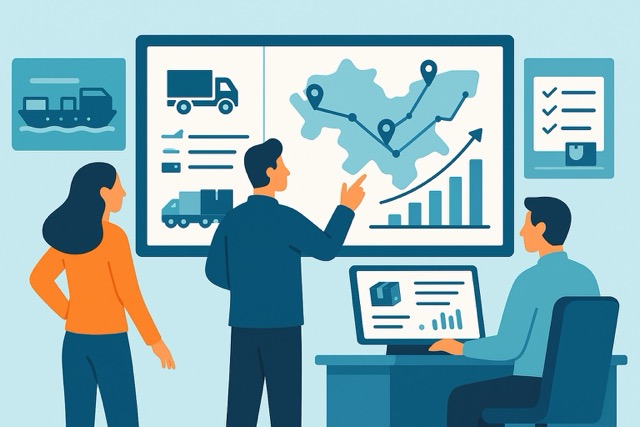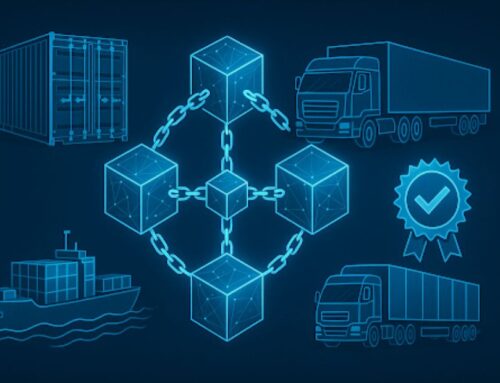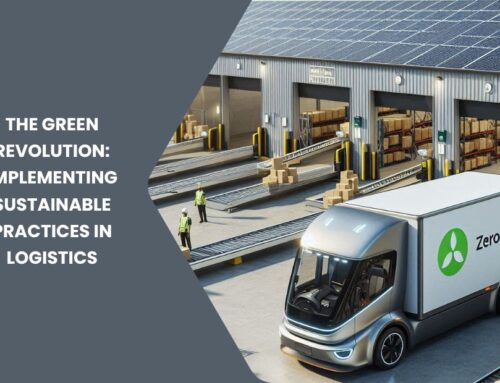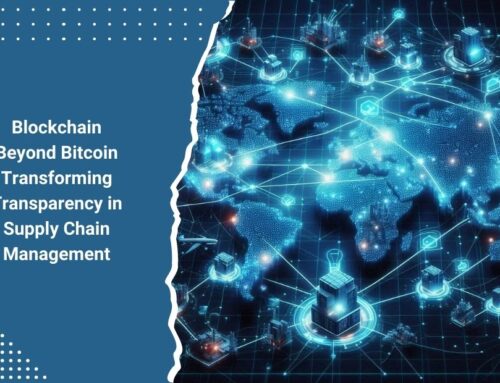When you’re responsible for keeping goods moving across multiple regions, suppliers, and carriers, staying ahead of problems is half the job. That’s where supply chain control towers come in—they’re not just dashboards; they’re decision hubs. A well-implemented control tower lets you monitor, coordinate, and act across your logistics operations in real time. It gives you the visibility and tools to turn data into decisions, and uncertainty into action. In this article, you’ll explore what supply chain control towers are, how they work, and how to use them to drive efficiency, resilience, and speed across your network.
What a Supply Chain Control Tower Actually Does
A control tower centralizes your data and gives you a unified view of everything happening across your supply chain—shipments, inventory levels, supplier activities, port status, weather alerts, and even geopolitical risks. Instead of jumping between spreadsheets or calling five different teams to get status updates, you’re seeing it all in one place. And it’s not just monitoring. With integrated rules and alerts, your tower can flag risks before they escalate—late supplier deliveries, bottlenecks at customs, or missed dock appointments.
That level of oversight doesn’t just help with day-to-day decisions. It becomes a strategic asset. You can model scenarios, test mitigation plans, and give your leadership team the confidence that if something goes wrong, you’re already working on a fix.
Turning Visibility Into Control
It’s one thing to know what’s happening. It’s another to act on it. A mature control tower doesn’t just alert you to problems—it gives you tools to act. For example, if you’re short on a key component, your tower might identify alternate suppliers or reroute inventory from a different DC. If a shipment is stuck at port, it can calculate downstream delays and suggest adjusted delivery windows for affected customers.
The best control towers integrate with transportation management systems (TMS), warehouse management systems (WMS), and ERP platforms. That means when you make a decision—like changing a route or rebooking a load—it updates your entire supply chain ecosystem automatically. You’re not just reacting; you’re orchestrating.
AI and Predictive Analytics Make It Smarter
You’re not managing yesterday’s data anymore. The smartest control towers now use artificial intelligence and machine learning to forecast problems before they show up. These systems learn from historical patterns, current events, and real-time feeds to tell you when things might go off track.
If your suppliers consistently underperform in Q3, or if a storm is tracking toward your shipping lane, the system surfaces those threats before they happen. And it doesn’t just warn you—it recommends mitigation options. This predictive power means you’re spending less time firefighting and more time preventing fires.
Collaboration Becomes Frictionless
One of the most overlooked benefits of a supply chain control tower is how it streamlines collaboration. Everyone—from procurement to transportation to customer service—is working off the same set of facts. You’re not chasing down the sales team for updates or asking your warehouse for Excel files that don’t reflect today’s numbers.
This shared view reduces internal confusion and speeds up external coordination. When your suppliers can plug into the same tower or feed you updates through APIs, you reduce lag and miscommunication. That means better vendor relationships, smoother execution, and faster customer responses.
Building Resilience with Real-Time Decision-Making
Resilience isn’t about having more inventory or more suppliers. It’s about reacting to disruption without breaking rhythm. When a factory goes offline, a port closes, or a carrier cancels, your control tower helps you pivot—fast. That kind of agility only works if you have data coming in from all the right places and a way to act on it quickly.
It’s not about preparing for one disruption. It’s about being prepared for whatever shows up tomorrow. When your tower is connected to live feeds from carriers, ports, customs systems, and suppliers, you don’t just know something happened—you know what to do about it before your competitors do.
Quantifying the ROI of a Control Tower
You’ll see the value in fewer late shipments, lower transportation costs, and better on-time performance. But there’s also value in what doesn’t happen. You avoid expediting fees because you spotted a delay early. You hold less inventory because you can trust your replenishment data. You reduce customer service tickets because you can proactively communicate issues.
And that value scales. Whether you’re shipping 500 pallets a week or managing a global network with dozens of nodes, the control tower keeps your performance aligned with your KPIs—delivery time, service levels, fulfillment rates, cost-to-serve. It’s like having a 24/7 command center that never blinks.
What to Consider Before You Launch One
Not every control tower delivers the same results. If you’re building one, you need to start with the use cases that matter most to your business. Are you solving for inbound visibility? Are you focused on customer delivery? Do you need better supplier compliance tracking?
Next, make sure your tower integrates with your systems. Real-time visibility only works if your data is accurate and current. Finally, don’t underestimate adoption. Your people need to trust the data and be trained on how to use it. A control tower isn’t a tool you set and forget. It’s an engine that gets smarter the more you use it.
What Does a Supply Chain Control Tower Do?
- Centralizes real-time logistics data
- Predicts and prevents disruptions
- Enhances cross-functional collaboration
- Enables rapid decisions at scale
- Improves visibility across suppliers and customers
In Conclusion
A control tower doesn’t just help you see your supply chain—it helps you run it with confidence. You’re not waiting for reports. You’re not reacting to problems too late. You’re operating in real time, with live data, automated decisions, and clear communication across every link in the chain. Whether you’re trying to cut costs, improve service levels, or boost resilience, a supply chain control tower puts you in the pilot seat. And in a world of rising complexity and razor-thin margins, that kind of control isn’t optional—it’s essential.
For additional information on supply chain management, technology, and my professional insights, please visit my Mystrikingly.









